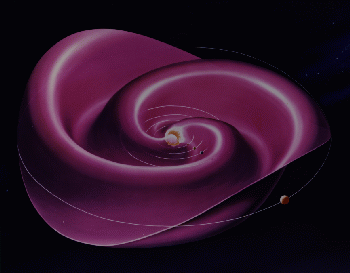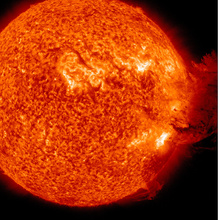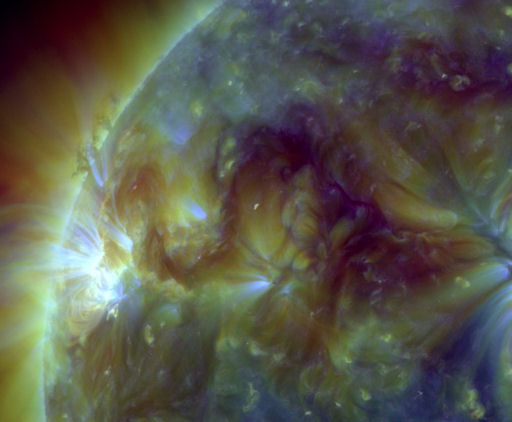- May 11, 2008
- 19,644
- 1,199
- 126
It is not highly technical(perhaps as events unfold), but interesting nonetheless...
http://www.nature.com/news/2011/110615/full/news.2011.370.html
More information :
http://www.nasa.gov/vision/universe/solarsystem/voyager-interstellar-terms.html

http://www.nature.com/news/2011/110615/full/news.2011.370.html
Seventeen and a half billion kilometres from Earth, mankind's most distant probe seems to be on the edge of interstellar space.
The Voyager 1 spacecraft is at the limit of the 'heliosheath', where particles streaming from the Sun clash with the gases of the galaxy. Contrary to scientists' expectation of a sharp, violent edge, the boundary seems to be a tepid place, where the solar wind mingles with extrasolar particles.
"We're in this mixed-up region where the Sun still has some influence," says Stamatios Krimigis, a physicist at the Applied Physics Laboratory of Johns Hopkins University in Laurel, Maryland. "It's certainly not what we thought."
“We may have crossed into interstellar space and don't know it.”
The new findings, reported by Krimigis and his colleagues this week in Nature, are the latest of many during the spacecraft's long journey1. Launched in 1977, Voyager 1 photographed active volcanoes on the moon Io on its way past Jupiter in 1979. The following year, it confirmed the existence of three new moons orbiting Saturn. In one of its final photographs, transmitted in 1990, Earth appears as a grainy speck bathed in the rainbow rays of the Sun.
Crossing the unknown
Since then, NASA scientists have shut down six of its ten instruments, and it is so far away that transmissions now take more than 16 hours to reach Earth. But Voyager's work continues. It is now travelling out of the heliosphere, the bubble of space filled by the Sun's wind. In late 2004, Voyager 1 crossed the 'termination shock', the boundary beyond which the solar wind's influence begins to wane. And this year researchers were expecting it to meet another boundary — one at which the solar wind sharply reverses direction, signalling the beginning of interstellar space.
Instead, Krimigis says, measurements of low-energy charged particles show that the solar wind has gradually slowed to zero and is mingling with interstellar gases. Theories failed to predict this mixed-up environment, and Krimigis says it may even be possible that this is, in fact, what interstellar space looks like. "We may have crossed and don't know it, because nobody has a model that describes what we're seeing," he says.
The blowing of far-flung interstellar gases may seem inconsequential to those of us closer to the Sun, but the details do matter, says Voyager's chief scientist Ed Stone at the California Institute of Technology in Pasadena. The Sun is currently flying through debris from several nearby supernovae. Streams of particles and the magnetic fields produced by our star are shielding us from the some of the interstellar radiation from the blasts, he says. "The size of this bubble is important."
Voyager should be able to provide more answers in the coming years. The spacecraft's plutonium power plant will allow it to operate smoothly until at least 2020, and "we will continue to be taking data", says Krimigis. Even after its signal fades, the spacecraft's journey will continue; it should pass the constellation Camelopardalis in around 40,000 years.
More information :
http://www.nasa.gov/vision/universe/solarsystem/voyager-interstellar-terms.html











